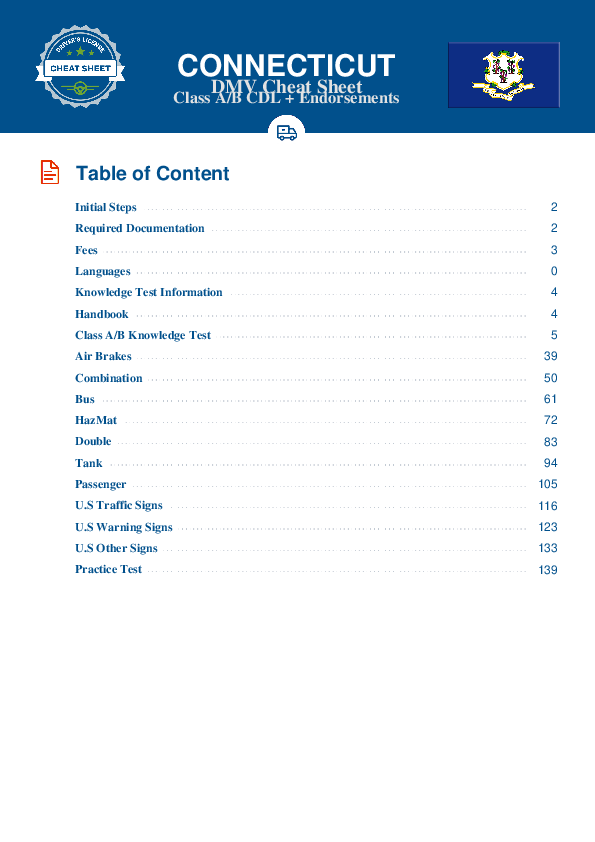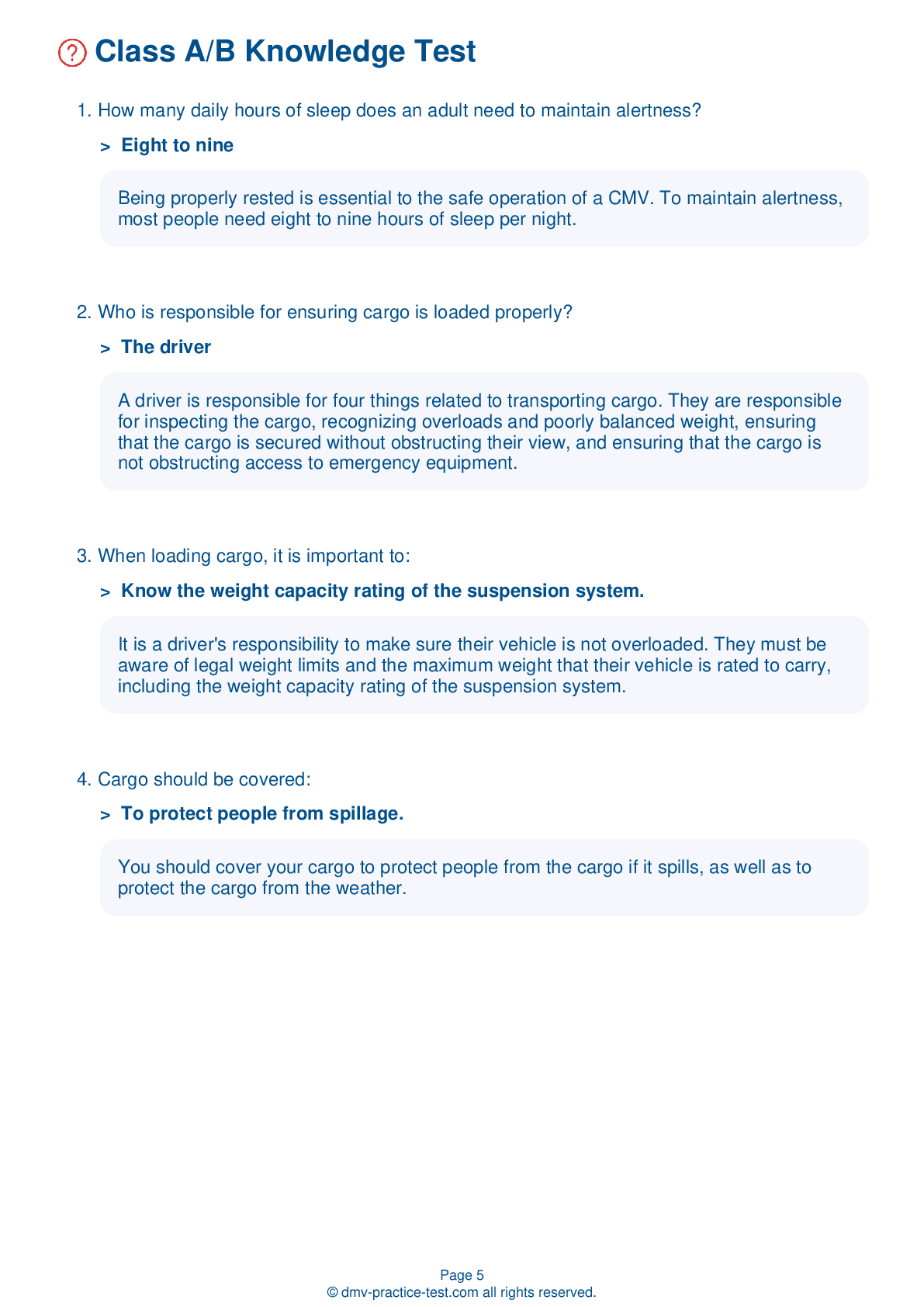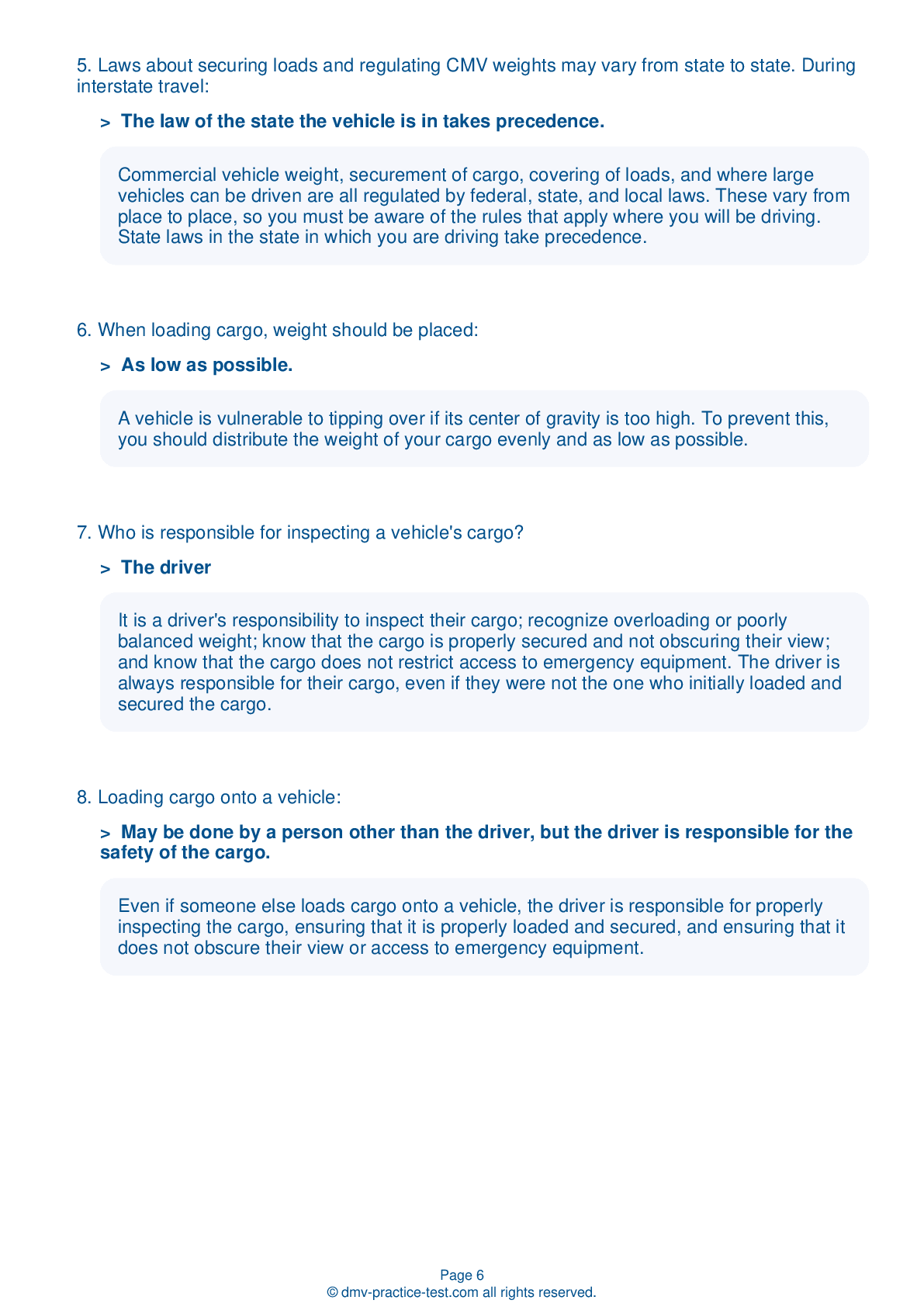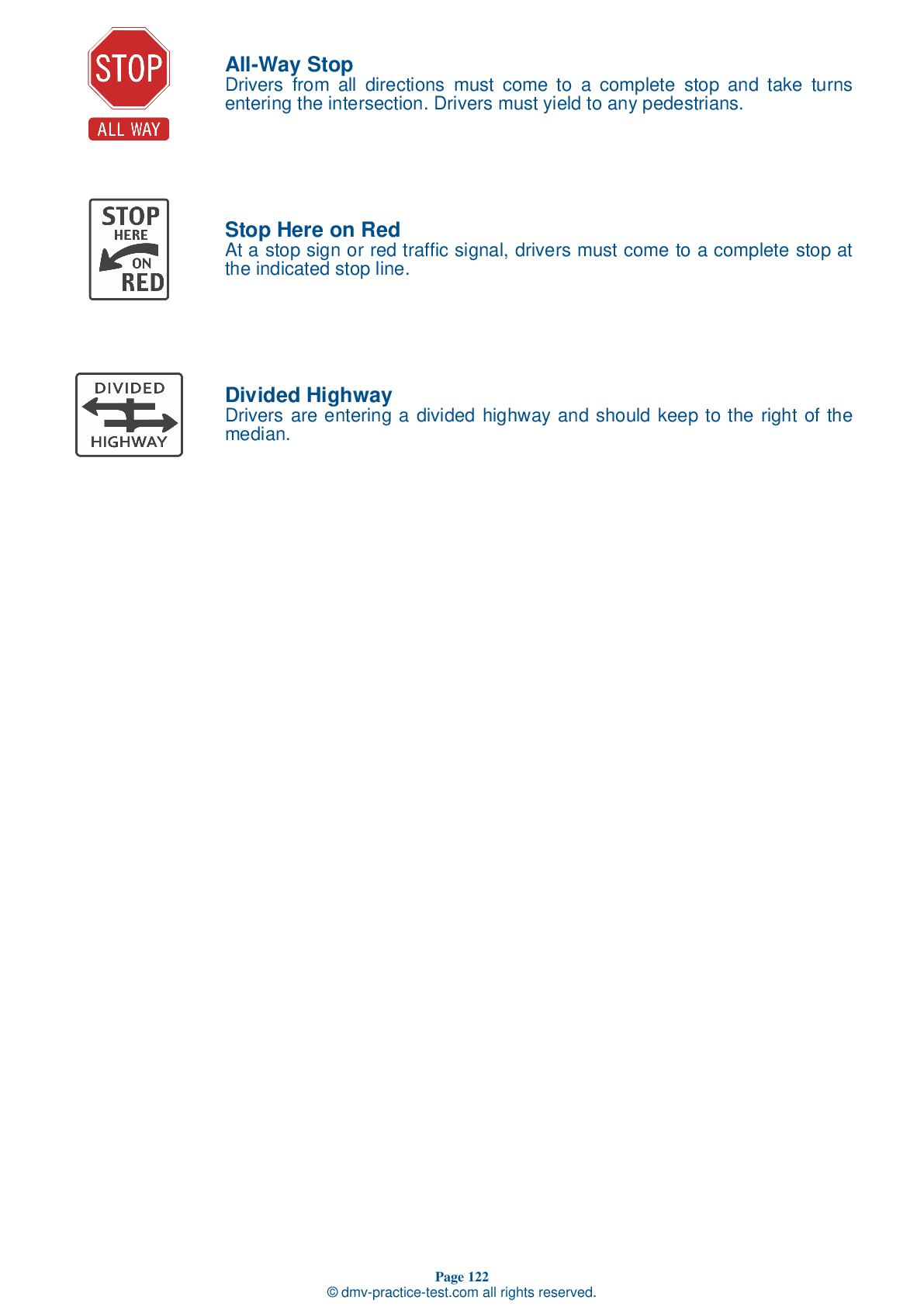Bus #1
Bus Driver Testing | Connecticut 2025 #1 Page 2 of 3
Train for FREE online with our CT bus CDL test. The official exam test consists of several obligatory parts, with all of them checking your knowledge of different blocks of road rules. If you need to obtain a license in Connecticut in 2025, learn how to become a bus driver and then practice as much as possible. Free sample tests published on our website will help you check and improve your knowledge and boost your grades. Please bear in mind that DMV requirements for a bus driver may vary from state to state.
20
16
20
8 . During the vehicle inspection test, you must be able to adequately check all of the following, except:
During the pre-trip vehicle inspection test, you will be asked to check the power steering, water pump, alternator, and air compressor belts, if the vehicle is equipped.
9 . When alley docking, you should first:
If you are asked to alley dock, you should first pull past the alley and stop your vehicle in a position that is parallel to the outer boundary. From there, you should back your vehicle entirely into the alley parking area. Your vehicle should be parked in a straight position within the boundaries of the parking space.
10 . If a school bus stalls on a railroad track:
If a school bus becomes stalled or trapped on railroad tracks, the driver should immediately evacuate everyone from the bus. If the bus is struck by a train, to avoid any flying debris, the students should be led far away from the bus at an angle that is in the direction of any oncoming train.
11 . During a vehicle inspection, ensure that lug nuts are all of the following, except:
Free of rust.
During a vehicle inspection test, you must ensure that all lug nuts are present, free of cracks and distortions, and showing no signs of looseness, such as rust trails or shiny threads. Verify that all bolt holes are free of cracks and distortions.
12 . Where are danger zones of a school bus located?
On top of the bus
The danger zones of a school bus are areas in which children are most likely to be hit, either by another vehicle or by the bus itself. Such areas are located to the front, sides, and rear of a bus.
13 . If you must drive in reverse at a student pick-up point, you should:
Backing in a school bus is strongly discouraged and should be done only if there is no other safe way to move the vehicle. If you must drive in reverse at a student pick-up point, you should wait until all students have first loaded the bus.
14 . During the vehicle inspection test, you must be able to do all of the following, except:
During the pre-trip vehicle inspection test, you will be asked to indicate where the power steering fluid dipstick or reservoir sight glass is located. You will need to show that the power steering fluid is within a safe operating range.
2025 Connecticut | Frequently Asked Questions
A CDL Class B license in Connecticut allows you to operate single vehicles with a gross vehicle weight rating (GVWR) of 26,001 pounds or more, or any such vehicle towing a vehicle not exceeding 10,000 pounds GVWR. It includes vehicles like straight trucks, large buses, segmented buses, and trucks towing smaller vehicles.
A Class B CDL license in Connecticut enables the holder to operate single vehicles with a gross vehicle weight rating (GVWR) of 26,001 pounds or more, or tow a vehicle not exceeding 10,000 pounds GVWR. This includes straight trucks, large passenger buses, segmented buses, dump trucks with small trailers, and trucks towing smaller vehicles.
To acquire a Class B CDL license in Connecticut, you must be at least 21 years old (18-20 for intrastate driving), possess a valid Connecticut driver's license, pass a vision test, and successfully complete a knowledge test. After that, you must obtain a Commercial Learner's Permit (CLP), hold it for 14 days minimum, and pass a skills test.
In Connecticut, you must be at least 21 years old to qualify for a Class B CDL license for interstate transport. However, if you plan to drive only within the state (intrastate transport), you can qualify at 18 years old. It's important to note that additional requirements must also be met.
Specific endorsements are not necessary for a Class B CDL license, but they can expand your job opportunities. Endorsements certify additional skills like operating a school bus (S), passenger vehicle (P), or tank vehicle (N). You can also get an H endorsement for transporting hazardous materials. Each endorsement requires passing an additional knowledge test.
The Class B CDL skills assessment in Connecticut includes three parts: a pre-trip vehicle inspection test, a basic vehicle control test, and an on-road driving test. These tests assess your ability to inspect your vehicle, control the vehicle in various situations such as backing and turning, and safely operate the vehicle in traffic.
Yes, Class B CDL license holders in Connecticut are restricted to driving single vehicles with a gross vehicle weight rating (GVWR) of 26,001 or more pounds, or a towed vehicle not exceeding 10,000 pounds GVWR. They cannot drive a combination of vehicles (like a tractor-trailer) unless they have a Class A CDL. Additionally, they must comply with federal hours-of-service regulations.
Yes, the written Class B CDL test in Connecticut can be taken in languages other than English. The Connecticut Department of Motor Vehicles provides the test in several languages. However, federal regulations require that all CDL holders must be able to read and speak English sufficiently to converse with the general public, understand highway traffic signs and signals, respond to official inquiries, and make entries on reports and records.
Yes, you can request accommodations for the Class B CDL written exam in Connecticut if you have a disability. The Connecticut Department of Motor Vehicles complies with the Americans with Disabilities Act (ADA) and provides reasonable accommodations like extra time, a separate testing room, or use of special equipment. Be sure to make your request well in advance of your scheduled test date.
Yes, if you fail the Class B CDL written test in Connecticut, you can retake it. However, you must wait at least 7 days before retesting. There's also a retest fee that you'll need to pay each time you retake the test. It's recommended to study the manual thoroughly before retaking the test to increase your chances of passing.



